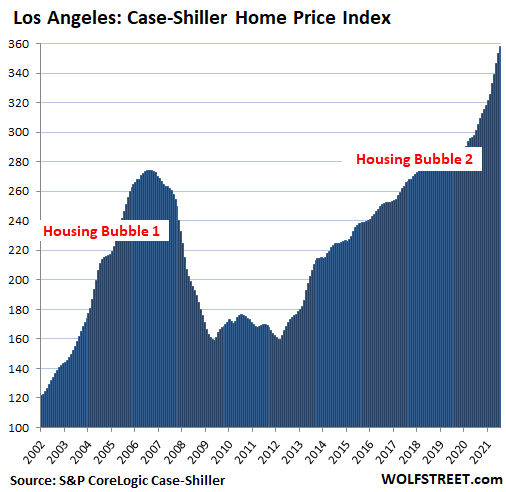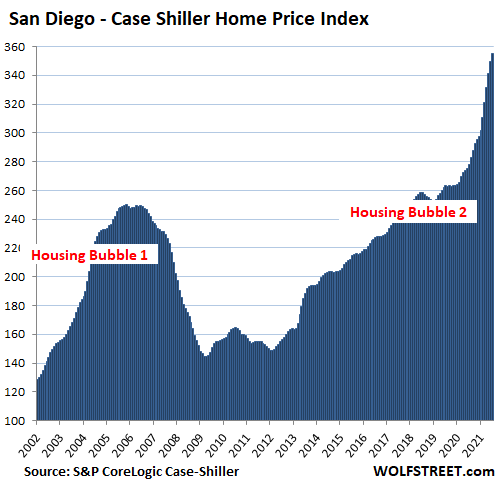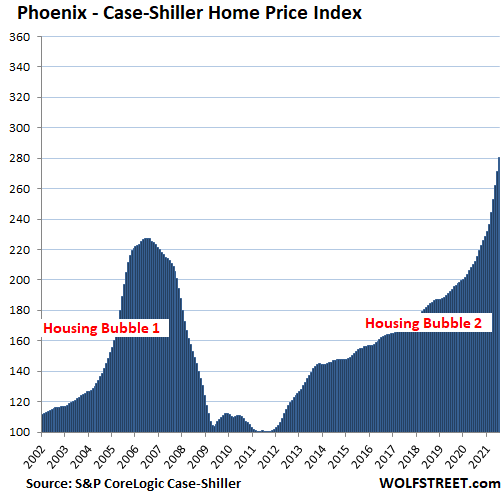The Most Splendid Housing Bubbles in America: Holy Cow, September Update
Even the Fed is getting antsy about this raging mania house-price inflation. Housing Bubble 1 is starting to look cute in comparison.
House prices spiked 19.7% from a year ago, the biggest year-over-year increase in the data going back to 1987, according to the National Case-Shiller Home Price Index today. But the national index of this raging mania doesn’t do justice to individual metropolitan areas, where price spikes reached up to 32%.
The Fed is getting seriously antsy about this massive house price inflation, on top to the regular consumer price inflation that has hit 30-year highs. Just today, the president of the Federal Reserve Bank of St. Louis, James Bullard, who’d been fretting months ago about the “threatening housing bubble,” came out with a proposal to reduce the assets on the Fed’s balance sheet right after the taper is completed by mid-2022, which would purposefully allow long-term interest rates, including mortgage rates, to rise significantly.
“Everything can occur much faster than it could have in the previous recovery,” he said.
Markets have started to anticipate the end of QE. Long-term interest rates have started to rise. The 10-year Treasury yield is currently at 1.55%, the highest since mid-June. The average 30-year fixed mortgage rate today was 3.16%.
House price inflation. The Case-Shiller Index uses the “sales pairs method,” comparing the sales price of a house to the price of the same house when it sold previously, and includes adjustments for home improvements. By tracking the amount required to buy the same house over time, it is a measure of house price inflation.
Los Angeles metro: Prices of single-family houses rose 1.4% in July from June and spiked by 19.1% year-over-year.
All Case-Shiller Indices were set at 100 for January 2000. The index value for Los Angeles of 359 means that house prices have soared by 259% since January 2000, despite the Housing Bust in between. The Consumer Price Index (CPI) has risen by 62% over the same period.
This puts Los Angeles on the dubious pedestal of being the most splendid housing bubble on this list. All charts below are on the same scale as Los Angeles to show the relative heat of house price inflation in each market since 2000.

San Diego metro: House prices rose 1.6% for the month and by 27.8% year-over-year. Since 2000, prices have exploded by 255%:

Phoenix metro, holy cow: +3.3% for the month, +32.4% year-over-year. The reddest-hottest annual house price inflation among the most splendid housing bubbles here:

*****

